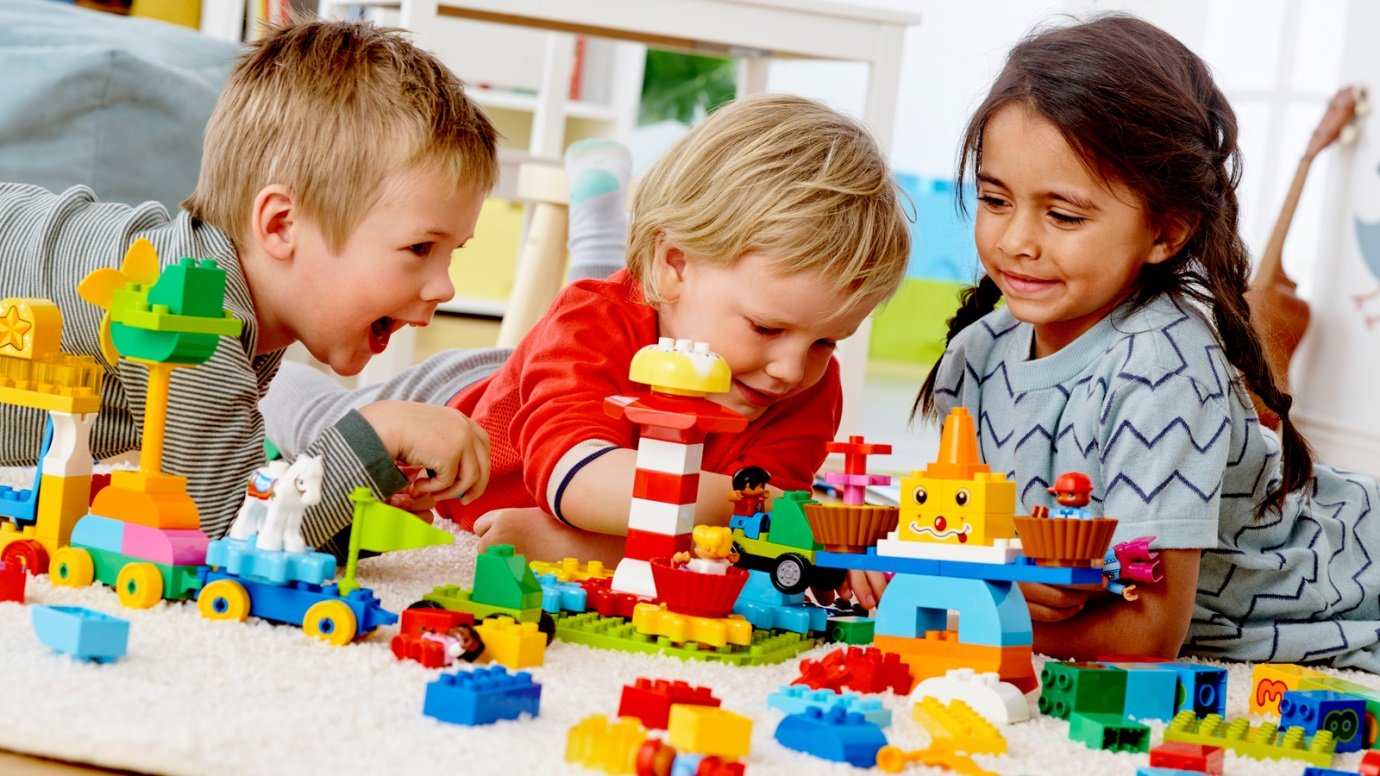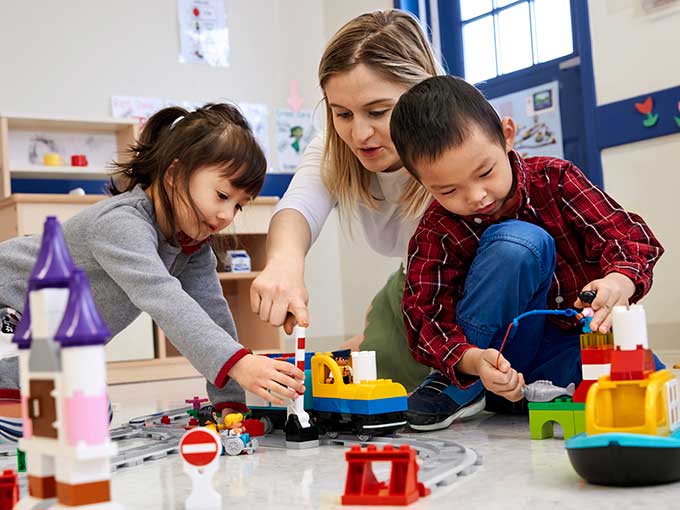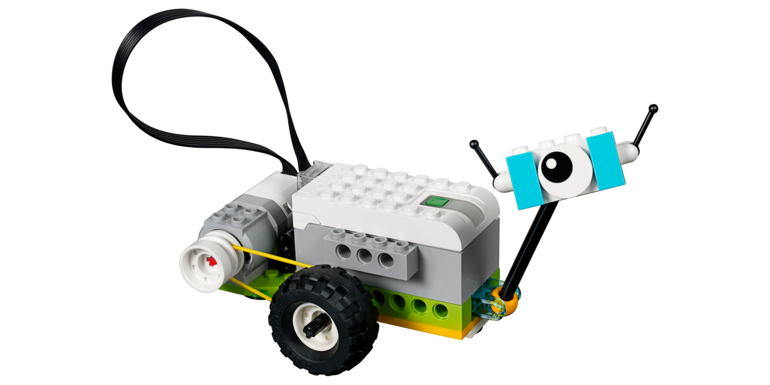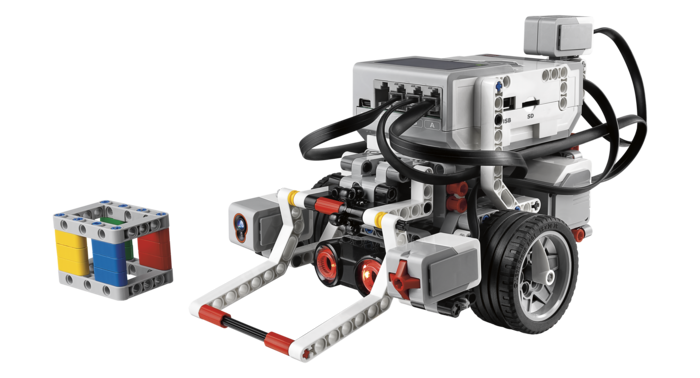The Role of Innovation STEM Labs in Education
STEM is a well-known abbreviation that stands for science, technology, engineering and mathematics. These are some of the most prominent criteria in education to which many students are subjected to from the start of their studies up to the last point, to which they would then be required to apply them in real life. STEM can be defined as an interdisciplinary approach where the basic academic concepts learned at school are combined with real-world lessons or experiences. It requires students to apply the four terminologies, science, technology, engineering, and mathematics, in conditions or circumstances that connect the classroom and the world that surrounds them.
This curriculum. STEM is based on the idea of educating students in the four disciplines mentioned above as a whole rather than separate and teach them as discrete subjects in class. Its main aim is to improve how students comprehend and apply science not only in class and science fairs but also outside of schools and in real-life situations. STEM is focussed on project-based learning in classrooms and includes technology to emphasize the application of science.
A STEM lab is, therefore, a unique replacement or solution to the traditional method of teaching science in the classroom like literature, whereby tutors use chalk and board or digital content worksheets. They are a supplemental educational resource created by VEX Robotics that aim to support educators with STEM lesson plans that are in line with the best scholarly standards. Each lab contains hands-on lessons that encourage the practical application and learning of all the four combined disciplines within STEM by supporting teamwork and collaboration among students. This helps students learn better as they directly involve themselves in the various practical and in-learning processes enabling them to retain more than what they usually do in classrooms.
Steps Involved
1. Inspire the students
The students are taught the properties of each material they deal with in the lab which helps them relate to those within their environment. With the guidance of the instructor, the student construct models using the available materials assisting in the development of the hand-mind skill whereby the student can put into practice what they have learned and easily replicate it using other materials.
2. Engage the students
The students build various models to give them a practical understanding of the concept being taught and develop their analytical thinking capacities. They also develop imaginative and creative prowess by exploring the ‘what if’ scenarios of every project.
3. Prepare for the real-world
The students develop the necessary skills needed for practical application by understanding how the concept is used in real life and revises these concepts using the ‘Activity Plan Manual.’
Stem labs have been incorporated in many K-12 schools within the different Arabic States such as the United Arab Emirates, Qatar, Kuwait, Oman, and Saudi Arabia. These labs are set up in line with the countries’ vision of providing top-class education for the success of all the students, within an organization, in science.
The benefits of STEM education in K-12 educational systems
They foster Ingenuity and creativity among students
Through the hands-on application of various projects by students, ingenuity, and creativity pairs with STEM and results in new and inspiring ideas as well as innovations among them. Without these two skills, the recent unique developments in digital learning would not have been possible as the people responsible also had an excellent K-12 STEM education experience. Students also gain the ability to come up with new ideas that would help them apply whatever they may have learned, from the many various projects, in real-life.
It encourages experimentation
Development is all about risk-taking as the famous and well-renowned inventors or scientists wouldn’t have come up with such technological advancements used today if they did not experiment. Learning or education takes a similar route when it comes to tutoring students and exposing them to the knowledge and skills; they need to make it in life. This theory is also applied in STEM Labs, where students get to test and experiment with various projects. This allows them to take the necessary risks during learning activities and therefore, find out the right methods of doing things in real-life scenarios.
It builds resilience among students
When students are involved in STEM learning activities, they learn in a safe environment that allows them to fail without fear of being judged by their peers or presented in front of their tutors. This enables students to experiment on various projects and when they fail, they are allowed to try again and again, unlike in classrooms during exams. With this, students are capable of building confidence and resilience enabling them never to give up even when things get tough. They learn that failure without giving up ultimately leads to success.
It promotes teamwork and collaboration
STEM education is applied to students with different levels of abilities and understanding. During projects, these different students work together with the system encouraging the maximum contribution of every person and focusing on individual learning needs whereby certain students can gain assistance on weak areas so that they can be at par with everyone else. This motivates the students to learn more and gain the skills they would require for use in real-life. Co-operation, teamwork, and collaboration are promoted as students work together on experiments and help each other succeed in the world of science and technology.
Facilitates the use of tech
In STEM Labs, students learn all about the power of technology in the modern world and are exposed to many advanced and intriguing inventions that would blow their minds. Apart from raising interest in the children, it also allows them t embrace technology whenever they encounter new devices enabling them to fit in into the ever-growing tech-world.
Promotes the application of knowledge and skills
By using STEM education, students are taught various skills that they can apply in the real world and thus are motivated to learn more. The ability to apply their knowledge allows them to impact their communities and their loved ones positively.
Conclusion
The application of innovation STEM Labs in K-12 educational systems within schools has significantly helped improve the success and development of students. It has allowed many students to be aware of their surroundings and gain the necessary skills to not only help them in their classroom tests but also apply them in real-life situations.
School Radio
School Radio is a creative, engaging, and exciting medium that would allow your students to:
- Express their views, engage in lively debates and explore their creativity.
- Develop their speaking and listening skills, build confidence and raise literacy standards.
- Your students will also gain real world skills using the same tools as professional radio broadcasters!
Benefits of School Radio
- Inclusion – A School Radio station run by the students and for the students will help build an inclusive atmosphere in the school. Radio is all about communication and running a radio show takes commitment and teamwork in order for it to be a success. Our systems are easy enough to use that all students, regardless of age or ability can get involved.
- Building Confidence – Most people find talking to a ‘mic’ in a closed room far less intimidating than appearing on camera or on stage. This allows students to express their views and build their confidence whether it is discussing important issues or sharing ideas, radio gives your students a confident voice within your school.
- Develop Speaking & Listening Skills – Radio is about speaking and listening. Whether you are presenting or just listening to a show, these vital skills are not only fundamental in radio but are essential for ‘real world’ skills.
- Improving Literacy – Seems strange to be talking about writing skills in radio but the first time a student looks at the ‘mic’ and then asks what they should say, they realize they need to write scripts and prepare between links. Extend this preparation for talk shows, radio drama or telephone interviews and it is clear that writing plays a big role in radio and extends to meeting the National Curriculum in many ways.
- National Curriculum – School Radio helps schools and academies to supplement learning and meet the National Curriculum in ways that you may not even realize. It’s also a great way to keep staff, student and parents/guardians alike updated with school life.
- Giving Students A Voice and Empowerment – School Radio offers a platform for your students to discuss the issues that matter to them in a non-confrontational format. Whether it is discussing important issues or sharing the music they love, radio gives your students a voice within your school.
- Teamwork – Planning and presenting radio shows requires a great deal of teamwork. Many schools run their School Radio station like a ‘real’ station assigning roles and responsibilities for presenters, engineers, and station management.



LEGO® Education
We are LEGO® Education. For more than 37 years we have been working with teachers and educational specialists like you to deliver playful learning experiences that bring subjects to life in the classroom and make learning fun and impactful. We have a wide range of physical and digital educational resources that encourage students to think creatively, reason systematically and release their potential to shape their own future.
Our solutions for teaching and hands-on learning inspire interest in Science, Technology, Engineering, and Math (STEM), targeted at preschool, elementary and middle school. These are based on the LEGO® system for playful learning combined with curriculum-relevant material and digital resources. With educational sets, lesson plans and curriculum material, assessment tools and teacher training and support, we can help you meet your curriculum objectives and provide you with the tools you need to make learning inspiring, engaging and effective.
We believe that expanding knowledge and building academic and 21st-century skills will create active, collaborative, lifelong learners. Together with educators, we aim to enable every student to succeed in education and be prepared for future life challenges.
Early Learning from LEGO® Education
LEGO® Education introduces the early learning of early math, science, and language. It encourages a passion for invention and researches to support the students develop interpersonal skills that will keep them up for a successful learning entire life. The solutions from LEGO®Education for young children help them learn the critical early Science, Math, and Language skills. The social and emotional skills that they need to succeed in their school and life can be acquired through these creative intuitive solutions.

LEGO® Education Early learning Solutions
The LEGO® Educations Solutions help them to:
- Build Confidence – Children are born curious and eager to learn. Our Early Learning solutions stimulate children’s natural curiosity while encouraging young children to learn through play.

2. Build Early Skills – Focus on building your students’ skills with solutions designed to stimulate their curiosity.

3. Boost their passion – Add to the fun with special booster sets which give endless opportunities to explore, play, and learn.

4. Fun and Engaging Lessons – Our solutions integrated with Lego Education easily integrate into classroom lessons to make learning fun and engaging.

LEGO® Education STEAM Park
Builds on every child’s natural curiosity and desire to create, explore, and investigate the world of early science, technology, engineering, art, and math (STEAM) through creative play. Children grow their understanding of gears, motion, measurement, and solving problems together in a fun and engaging way.

LEGO® Education Coding Express
Inspire early learners to explore early coding concepts such as sequencing, looping and conditional coding, while developing problem solving skills, critical thinking, collaboration and social and emotional skills.

LEGO® Education Solutions for Primary School
LEGO® offers engaging and hands-on experiences students need to explore and learn the core STEAM concepts and relate them to the real world. With students, ideas evolve as they solve problems and find out how science, technology, engineering, arts, and math impact their daily lives.
LEGO® Education WeDo 2.0
Brings to life 280 building elements that motivate students to collaborate, build, problem-solve, and explore, all while deepening their STEAM learning and developing 21st-century skills. The combination of physical LEGO® bricks, standards-aligned activities, and intuitive block-based coding environment means that interactive, creative learning is easier than ever to achieve – students can see their builds in action and test and refine their problem-solving skills!


LEGO® Education Solutions for Secondary School
The solutions for secondary school grow with students as they engage at every level, providing hands-on experiences that stimulate communication, creativity, collaboration, and critical thinking skills. When students learn with LEGO® bricks, coding tools, and supporting lesson plans for teachers, they ignite their natural curiosity and sharpen their scientific inquiry, engineering design, and data analysis skills — so they can succeed in their STEM classes today and realize their full potential as digital citizens and leaders tomorrow.
The LEGO® Education SPIKE Prime
The LEGO® Education SPIKE Prime Set is the go-to STEAM learning tool for grade 6-8 students. Combining colorfulLEGO®building elements, easy-to-use hardware, and an intuitive drag-and-drop coding language based on Scratch, SPIKE Prime continuously engages students through playful learning activities to think critically and solve complex problems, regardless of their learning level. From easy-entry projects to limitless creative design possibilities, SPIKE Prime helps students learn the essential STEAM and 21st century skills needed to become the innovative minds of tomorrow… while having fun!


LEGO® MINDSTORMS® Education EV3
LEGO® MINDSTORMS® Education EV3 is a hands-on, cross-curricular solution that engages and challenges students to practice STEM and robotics skills in a “near real world” environment, preparing them for college and career in the technology infused world.



LEGO® Education Simple & Powered Machines
It uses LEGO® bricks and creative activities to make interactive, exploration-based learning easier than ever to achieve.Powered mechanical and hands-on solutions that link textbook instruction to real-world experiences are the focus of this curriculum activity pack and set for grades 6–8. Students cover a broad range of concepts, such as force, motion, and energy, using 396 LEGO Technic bricks and a motor to model physical behaviours.







Its such as you read my thoughts! You appear to grasp so much about this, such as you wrote the ebook in it or something. I think that you simply could do with a few p.c. to power the message home a little bit, but other than that, that is fantastic blog. A great read. I will certainly be back.